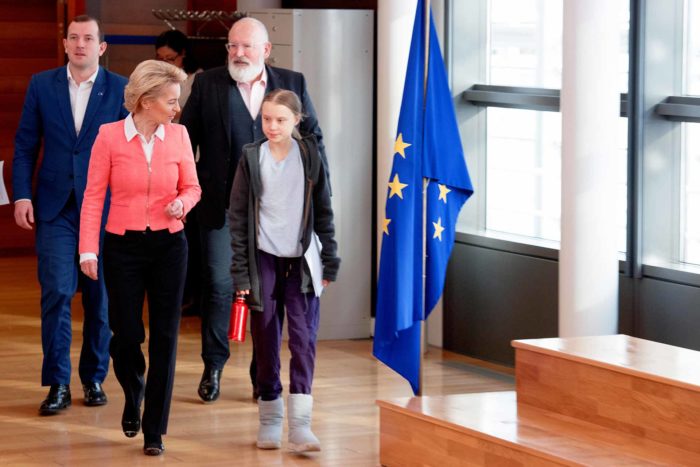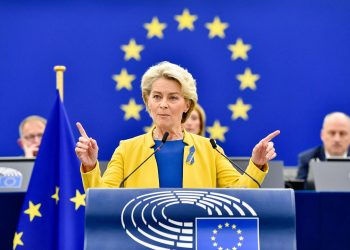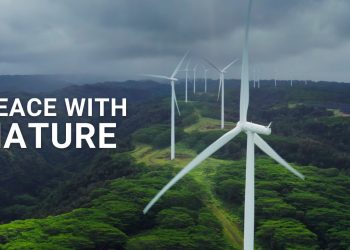The EU’s Climate Law and ambition to become the first climate-neutral bloc in the world by 2050 is at the heart of the European Green Deal. Climate change and environmental degradation are an existential threat to Europe and the world. To overcome these challenges, Europe needs a new growth strategy that transforms the Union into a modern, resource-efficient and competitive economy where:
- there are no net emissions of greenhouse gases by 2050
- economic growth is decoupled from resource use
- no person and no place is left behind
The European Green Deal is the EU roadmap for making the EU’s economy sustainable. This will happen by turning climate and environmental challenges into opportunities across all policy areas and making the transition just and inclusive for all.
Today European Climate Pact is a lonely global road
There are reasons for optimism. Most important, the advanced technologies exist, commercially or pre-commercially, to create a zero-carbon, resource-saving, environmentally sustainable advanced economy. By combining renewable energy, digital technologies, advanced materials, and a sharing economy in transport and other infrastructure, we can decarbonize the energy system, move to a circular economy, and dramatically reduce the flow of primary resources.
The Green Deal announced by the European Commission is a demonstration of European social democracy at work.
Jeffrey D. Sachs, Professor of Sustainable Development at Columbia University
Yet three big challenges must be addressed. The first is to overcome status quo interests. The second challenge is financing and the last big challenge is diplomatic. Europe accounts for around 9.1% of global carbon dioxide emissions, compared with 30% for China and 14% for the US. Even if Europe fully implements the Green Deal with Climate Law, it will be for naught if China, the US, and other regions fail to match its efforts. European leaders therefore rightly treat diplomacy as crucial to the Green Deal’s success. This seems to be today the EU lonely global road.
The European Green Deal provides a roadmap with actions to:
- boost the efficient use of resources by moving to a clean, circular economy
- restore biodiversity and cut pollution.
2050 EU policy target
The European Climate Law sets the 2050 target and the direction of travel for all EU policy, and gives predictability for public authorities, businesses and citizens. At the same time, the Commission is launching a public consultation on the future European Climate Pact. Through this consultation the public will be involved in co-designing this instrument.
President Ursula von der Leyen said: “We are acting today to make the EU the world’s first climate neutral continent by 2050. The Climate Law is the legal translation of our political commitment, and sets us irreversibly on the path to a more sustainable future. It is the heart of the European Green Deal. It offers predictability and transparency for European industry and investors. And it gives direction to our green growth strategy and guarantees that the transition will be gradual and fair.”
We are in an emergency, but the real revolution is the environmental one!
Frans Timmermans
Executive Vice-President for the European Green Deal Frans Timmermans added: “We are turning words into action today, to show our European citizens that we are serious about reaching net-zero greenhouse gas emissions by 2050. The European Climate Law is also a message to our international partners that this is the year to raise global ambition together, in the pursuit of our shared Paris Agreement goals. The Climate Law will ensure we stay focused and disciplined, remain on the right track and are accountable for delivery.”
With the European Climate Law the Commission proposes a legally binding target of net zero greenhouse gas emissions by 2050. The EU Institutions and the Member States are collectively bound to take the necessary measures at EU and national level to meet the target. EU is in line with the Paris Agreement objective to keep the global temperature increase to well below 2°C and pursue efforts to keep it to 1.5°C.
The Climate Law includes measures to keep track of progress and adjust our actions accordingly, based on existing systems such as the governance process for Member States’ National Energy and Climate Plans, regular reports by the European Environment Agency, and the latest scientific evidence on climate change and its impacts. Progress will be reviewed every five years, in line with the global stocktake exercise under the Paris Agreement.
Paris Agreement and EU Climate Law
The Climate Law addresses the pathway to get to the 2050 target:
- Based on a comprehensive impact assessment, the Commission will propose a new 2030 EU target for greenhouse gas emission reductions. The Climate Law will be amended once the impact assessment is completed.
- By June 2021, the Commission will review, and where necessary propose to revise, all relevant policy instruments to achieve the additional emission reductions for 2030.
- The Commission proposes the setting of a 2030-2050 EU-wide trajectory for greenhouse gas emission reductions, to measure progress and give predictability to public authorities, businesses and citizens.
- By September 2023, and every five years thereafter, the Commission will assess the consistency of EU and national measures with the climate-neutrality objective and the 2030-2050 trajectory.
- The Commission will be empowered to issue recommendations to Member States whose actions are inconsistent with the climate-neutrality objective, and Member States will be obliged to take due account of these recommendations or to explain their reasoning if they fail to do so. The Commission can also review the adequacy of the trajectory and the Union wide measures.
- Member States will also be required to develop and implement adaptation strategies to strengthen resilience and reduce vulnerability to the effects of climate change.

Greta Thunberg visited European Commission and European Parliament in Brussels and she condemned EU Climate Law.
We will not allow you to surrender on our future.
Greta Thunberg
Shaping the European Climate Pact & Future Policies
Alongside government policies and regulation, all sectors of society and economy have a part to play in the transition to a climate-neutral European Union.
European Commission is therefore launching a public consultation on a new European Climate Pact. It is a broad initiative to give citizens and stakeholders a voice and role in designing new climate actions. The new public consultation is sharing information, launching grassroots activities and showcasing solutions that others can follow.
12 weeks Public Consultation
The public consultation will be open for 12 weeks. All inputs will be used to shape the Climate Pact, which will be launched before the United Nations Climate Change Conference taking place in Glasgow in November 2020 (COP26).















